The Da Vinci Code
Amazon Kindle edition of White Lie and the book signing event
WHITE LIE – THE TRUTH IS OUT THERE
Belvianes, France, August 15, 2012 -- The truth is out there and it is much more unbelievable than fiction. Thirty years ago, ‘Raiders of the Lost Ark’ exploded at the box office. The adventures of Indiana Jones were pure fantasy but the man he was based on was very real. His name was Otto Rahn.
Indiana Jones is a pop-culture phenomenon - Spielberg saw to that - making the charismatic relic hunter, who was willing to risk life and limb to outsmart the Nazi’s and beat them to discovering the Ark of the Covenant and the Holy Grail, impossible to forget. Was Indy pure fiction? Not quite.
'White Lie’ is a story about forbidden history, hidden relics and the adventures of a group of people who get involved in something much bigger than themselves. It combines the mission of the Knights Templar - the warrior monks who legends claim discovered a sacred treasure beneath Solomon’s Temple - with Nazi relic hunter Otto Rahn.
Otto Rahn Memorial Website interview with Jeanne D'Août, the Author of White Lie
Hi, Jeanne!
I congratulate you on the release of your book White Lie. This is a great event for all who are familiar with the work, searching and life of Otto Wilhelm Rahn. When did you first hear of him?
Jeanne:
The first time I heard of Otto Rahn was probably during my research of the history of Montségur and the Cathars in connection with Grail lore. I never studied the man himself and only knew what most people know; that he researched Grail lore, visited Montségur and was working for Himmler as a relic hunter in a pre-war Germany. It wasn't until 2008 that a friend sent me "Crusade against the Grail" in English, followed by "Lucifer's Court" and Nigel Graddon's "Otto Rahn, Quest for the Holy Grail". I was thinking of writing a thriller book at that time about the 1st century, and the mysteries of the Languedoc. I had already done a lot of research for the book, but didn't get around to actually writing it, because the financial crisis had made me and my husband work 7 days a week to make a living. In 2011 I first had the chance to sit down properly and started writing in January. I would write almost 18 to 20 hours a day for several months and Otto slowly became one of the key players in the book.
RELIGION: The Cathars and Otto Rahn
Ed Jajko says:_I would be most interested if Christopher Jones could cite his authorities for the Cathar Christology he presents us. What little I have read suggests that the Cathars had different, not entirely coherent views on Jesus Christ, but that they were not quite in consonance with what Mr. Jones has stated. Reference to a couple of scholarly sources would be much appreciated.
RH: Yes, a few precise sources.
Ed Jajko asked Christopher Jones to give sources for his statements about the Cathars. Christopher replies:
The sources for my comments on the Cathari are all from Cruzada contra el Grial [original German, Kreuzzug gegen dem Gral] by Otto Rahn. This particular translation was done by Fernando Acha and published by Hiperión in Madrid. To the best of my knowledge and a fact that was reconfirmed to me by the current copyright holder in Germany, Rahn's book was never translated into English although Spanish, French and Italian versions exist. The book was first published in 1933.
What is the Grail?
The Grail. Between 1190 and 1240, it formed the central theme of a series of literary works that spoke of, and appealed to, a new social class, that of the knights and warriors and the adventures they encountered on their travels. In recent decades, it unleashed Indiana Jones on one of his death-defying treasure hunts and was the central ingredient of Dan Brown’s The Da Vinci Code, one of the biggest bestselling novels ever.
For Richard Barber, in The Holy Grail: The History of a legend, “it is, in all its forms, a construct of the creative imagination”. However, for dozens of other authors, the Grail is not a literary invention, but a veritable treasure, out there, somewhere. Unfortunately, in general, studies trying to identify and trace the physical Grail have taken on flights of fancy. The Grail has been linked with countries from the Middle East to America, as well as with the persecuted Cathars and even extra-terrestrial beings. It has been labelled a code word for the Ark of the Covenant, after the Templars allegedly transported it from the Middle East to a new hiding place in France.
Dan McNeil: The Judas Apocalypse, and Interview with the author
On the eve of the Second World war, Dr. Gerhard Denninger, a German archeologist is approached by infamous Grail seeker Otto Rahn who tells him a fantastic story of Templars, Church scandal, a long-buried manuscript, and the key to finding the famous lost treasure of the Cathars. In 1944, with the help of a group of American soldiers, Denninger continues his quest for the secret of the Cathar treasure. With dangers dogging them at every step, will they find what they’re seeking? And will they be prepared for the shocking discovery that awaits them?
The Cathar Myth: Church of the Holy Grail
The first to create the Cathar myth referred to in The Da Vinci Code was Napoléon Peyrat, a bourgeois and talented fabulist, concocted in the 1870s an account of the Cathars, which, though largely made up, still passes as truth in esoteric circles today . Another equally influential is Jules Doinel (Jules-Benoît Stanislas Doinel, a Freemason and Spiritist (See "The Making of Spiritism" in the first part of Da Vinci Code Matrix). He claimed that Gnosticism was the true religion behind Freemasonry. Thus it is in the second half of 19th century France that the Cathar-myth was born, to which Joseph Péladan was the first to add to this a mention of the Holy Grail in his short treatise From Parsifal to Don Quixote, the secret of the Troubadours.
Holy Grail
Since the publication of The Da Vinci Code the debate rages as to what and where the true Holy Grail exists
Taken as a whole, the various renditions of the Holy Grail legend, whether they derive from Europe or Asia, imply that there are many forms that the Holy Grail can take.
These legends assert that the Holy Grail can be anything from the platter mentioned by Chrétien de Troyes, the first author of the Holy Grail legend, to the Cup of Christ alluded to by Robert de Boron, or even the Stone of Heaven mentioned by Wolfram von Eschenbach in Parzival.

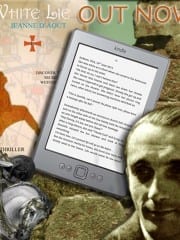

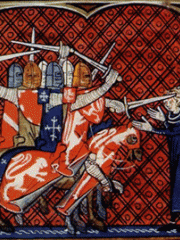

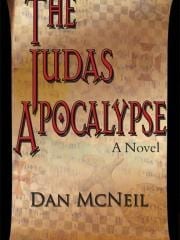
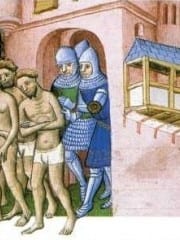
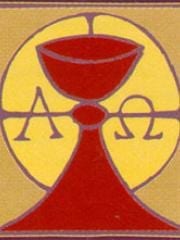
Commenti recenti
13 anni 44 settimane fa
13 anni 44 settimane fa
13 anni 44 settimane fa
13 anni 45 settimane fa
13 anni 48 settimane fa
14 anni 1 settimana fa